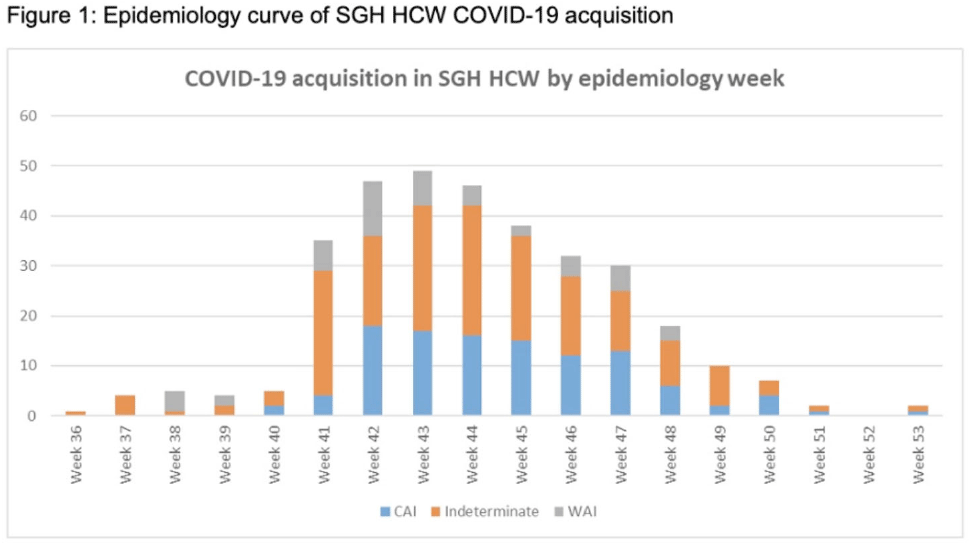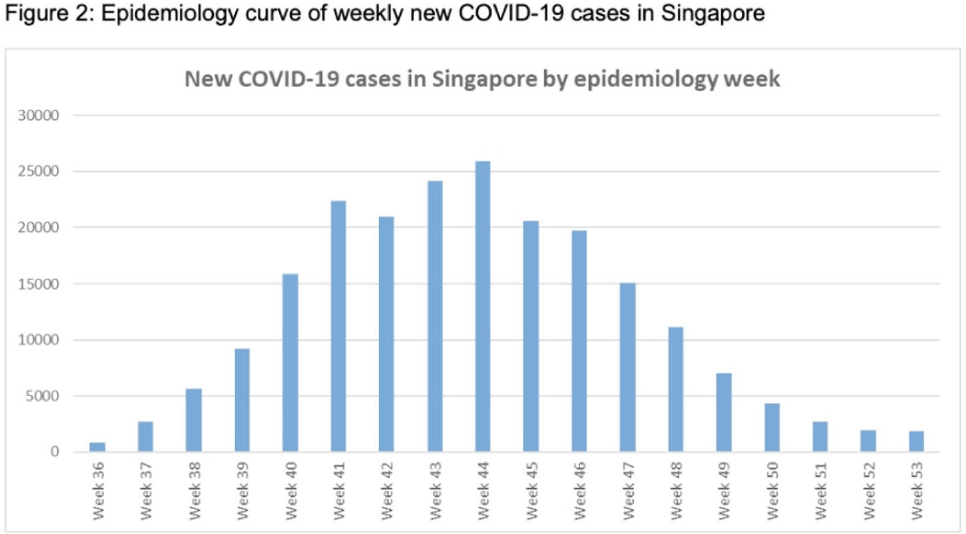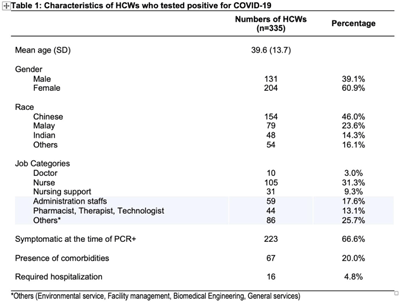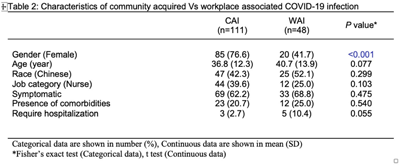117 results
Design and analysis of a negative pressure wall-climbing robot with an omnidirectional characteristic for cylindrical wall
-
- Journal:
- Robotica , First View
- Published online by Cambridge University Press:
- 05 June 2024, pp. 1-17
-
- Article
-
- You have access
- HTML
- Export citation
Prediction model to identify infectious COVID-19 patients in the emergency department
-
- Journal:
- Antimicrobial Stewardship & Healthcare Epidemiology / Volume 4 / Issue 1 / 2024
- Published online by Cambridge University Press:
- 17 May 2024, e88
-
- Article
-
- You have access
- Open access
- HTML
- Export citation
Mixed infections with Opisthorchis viverrini and intestinal flukes in residents of Vientiane Municipality and Saravane Province in Laos
-
- Journal:
- Journal of Helminthology / Volume 79 / Issue 3 / September 2005
- Published online by Cambridge University Press:
- 12 April 2024, pp. 283-289
-
- Article
- Export citation
Impact of COVID-19 pandemic on carbapenem-resistant Enterobacterales incidence in the South-East Asia region: an observational study
-
- Journal:
- Antimicrobial Stewardship & Healthcare Epidemiology / Volume 3 / Issue 1 / 2023
- Published online by Cambridge University Press:
- 15 November 2023, e208
-
- Article
-
- You have access
- Open access
- HTML
- Export citation
High-energy, hundred-picosecond pulsed 266 nm mid-ultraviolet generation by a barium borate crystal
-
- Journal:
- High Power Laser Science and Engineering / Volume 11 / 2023
- Published online by Cambridge University Press:
- 03 March 2023, e31
-
- Article
-
- You have access
- Open access
- HTML
- Export citation
Reduced cerebral cortex thickness is related to overexpression of exosomal miR-146a-5p in medication-free patients with major depressive disorder
-
- Journal:
- Psychological Medicine / Volume 53 / Issue 13 / October 2023
- Published online by Cambridge University Press:
- 25 November 2022, pp. 6253-6260
-
- Article
-
- You have access
- Open access
- HTML
- Export citation
Long-term psychological profile of general population following COVID-19 outbreak: symptom trajectories and evolution of psychopathological network
-
- Journal:
- Epidemiology and Psychiatric Sciences / Volume 31 / 2022
- Published online by Cambridge University Press:
- 27 September 2022, e69
-
- Article
-
- You have access
- Open access
- HTML
- Export citation
The global disease burden attributable to a diet low in fibre in 204 countries and territories from 1990 to 2019
-
- Journal:
- Public Health Nutrition / Volume 26 / Issue 4 / April 2023
- Published online by Cambridge University Press:
- 23 September 2022, pp. 854-865
-
- Article
-
- You have access
- Open access
- HTML
- Export citation
Epidemiological characteristics of extrapulmonary tuberculosis patients with or without pulmonary tuberculosis
-
- Journal:
- Epidemiology & Infection / Volume 150 / 2022
- Published online by Cambridge University Press:
- 29 July 2022, e158
-
- Article
-
- You have access
- Open access
- HTML
- Export citation
COVID-19 among healthcare workers of a tertiary-care hospital in Singapore
-
- Journal:
- Antimicrobial Stewardship & Healthcare Epidemiology / Volume 2 / Issue S1 / July 2022
- Published online by Cambridge University Press:
- 16 May 2022, pp. s34-s35
-
- Article
-
- You have access
- Open access
- Export citation
Linking sporadic hospital clusters during a community surge of the severe acute respiratory coronavirus virus 2 (SARS-CoV-2) B.1.617.2 delta variant: The utility of whole-genome sequencing
-
- Journal:
- Infection Control & Hospital Epidemiology / Volume 44 / Issue 6 / June 2023
- Published online by Cambridge University Press:
- 27 April 2022, pp. 1014-1018
- Print publication:
- June 2023
-
- Article
-
- You have access
- Open access
- HTML
- Export citation
Healthcare-associated multispecies outbreaks of OXA-48–positive carbapenemase-producing Enterobacteriaceae in a Singapore tertiary-care hospital
-
- Journal:
- Infection Control & Hospital Epidemiology / Volume 44 / Issue 1 / January 2023
- Published online by Cambridge University Press:
- 14 March 2022, pp. 8-16
- Print publication:
- January 2023
-
- Article
- Export citation
The improvement of parturition duration by high intake of dietary fibre in late gestation is associated with gut microbiota and metabolome in sows
-
- Journal:
- British Journal of Nutrition / Volume 128 / Issue 12 / 28 December 2022
- Published online by Cambridge University Press:
- 14 February 2022, pp. 2341-2352
- Print publication:
- 28 December 2022
-
- Article
-
- You have access
- HTML
- Export citation
Trends in food consumption by degree of processing and diet quality over 17 years: results from the Framingham Offspring Study
- Part of
-
- Journal:
- British Journal of Nutrition / Volume 126 / Issue 12 / 28 December 2021
- Published online by Cambridge University Press:
- 19 February 2021, pp. 1861-1871
- Print publication:
- 28 December 2021
-
- Article
-
- You have access
- HTML
- Export citation
Dependence of fishbone cycle on energetic particle intensity in EAST low-magnetic-shear plasmas
- Part of
-
- Journal:
- Journal of Plasma Physics / Volume 86 / Issue 6 / December 2020
- Published online by Cambridge University Press:
- 10 December 2020, 905860610
-
- Article
- Export citation
Longitudinal dimensions of alcohol consumption and dietary intake in the Framingham Heart Study Offspring Cohort (1971–2008)
-
- Journal:
- British Journal of Nutrition / Volume 125 / Issue 6 / 28 March 2021
- Published online by Cambridge University Press:
- 09 September 2020, pp. 685-694
- Print publication:
- 28 March 2021
-
- Article
-
- You have access
- HTML
- Export citation
Epidemiological and clinical characteristics of a familial cluster of COVID-19
-
- Journal:
- Epidemiology & Infection / Volume 148 / 2020
- Published online by Cambridge University Press:
- 07 July 2020, e145
-
- Article
-
- You have access
- Open access
- HTML
- Export citation
Gut microbial metabolism of dietary fibre protects against high energy feeding induced ovarian follicular atresia in a pig model
-
- Journal:
- British Journal of Nutrition / Volume 125 / Issue 1 / 14 January 2021
- Published online by Cambridge University Press:
- 30 June 2020, pp. 38-49
- Print publication:
- 14 January 2021
-
- Article
-
- You have access
- HTML
- Export citation








